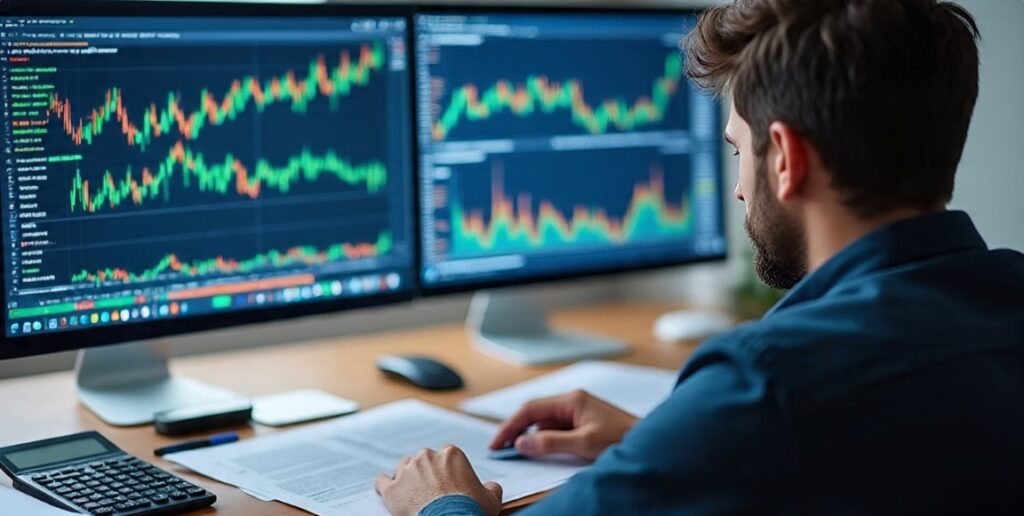Is Gold a Safe Haven in 2025? A Deep Dive into Geopolitical Risks and Portfolio Diversification
As global tensions rise and markets grow increasingly volatile, investors are asking a critical question: Is gold still a reliable safe haven in 2025? With inflation fears, economic instability, and ongoing geopolitical conflicts shaping the financial landscape, understanding gold investment geopolitical risks in 2025 is more important than ever. In this article, we examine gold’s performance amid uncertainty, explore diversification strategies, and offer expert-backed insights to help you make informed investment decisions.
Understanding Gold’s Role as a Safe Haven Asset
Historical Performance: A Hedge in Times of Crisis
Gold has long been revered as a “crisis commodity.” During events like the 2008 financial crisis, Brexit, and the COVID-19 pandemic, gold prices surged as investors sought protection from equity market turmoil. Its finite supply, global demand, and lack of counterparty risk make gold an ideal hedge during periods of economic and political upheaval. While history doesn’t predict the future, it does offer compelling evidence of gold’s value in uncertain times.
How Geopolitics Drive Gold Prices
In 2025, a range of geopolitical factors could influence gold prices. These include:
- Ongoing military conflicts and unrest in Eastern Europe and the Middle East
- U.S.–China trade tensions and potential tariff escalations
- Shifts in central bank policy amid inflationary pressure
- Currency instability and weakening of the U.S. dollar
Gold typically rises when the dollar weakens, as it becomes cheaper for foreign investors. Additionally, rising inflation—a common side effect of geopolitical disruption—further boosts demand for gold as a hedge.
Diversification: Mitigating Risk Through Gold
Gold plays a strategic role in portfolio diversification. It often moves inversely to equities and other risk assets, providing balance when markets are volatile. For conservative investors, a modest gold allocation can shield against downturns. For aggressive investors, gold can be used tactically to hedge against geopolitical risk while seeking capital appreciation in commodities markets.
Gold Investment Geopolitical Risks 2025: Expert Perspectives
According to a recent analysis by Goldman Sachs, “Gold remains a vital safe haven in 2025. With central banks increasing gold reserves and investors preparing for macroeconomic uncertainty, gold demand is expected to stay robust.”
This sentiment is echoed by major investment houses that view gold as a defensive asset amid the looming threat of stagflation—a combination of slowing economic growth and persistent inflation. The second half of 2024 saw a marked uptick in gold purchases by institutional and retail investors alike, signaling a growing perception of global risk.
Analyzing Data and Market Trends
The World Gold Council reported a 12% increase in central bank gold purchases in Q4 2024, particularly among emerging markets seeking to reduce exposure to the U.S. dollar. This reinforces gold’s status as a currency hedge and geopolitical buffer.
However, investors must also weigh volatility. Gold is not a high-yield growth asset—it doesn’t pay dividends or interest. Price corrections can occur based on market speculation, mining supply shifts, or changes in interest rates. For that reason, it’s best used as a complementary asset—not a portfolio cornerstone.
Strategic Portfolio Allocation Based on Risk Appetite
For Risk-Averse Investors
If your investment strategy prioritizes capital preservation, consider allocating 5–10% of your portfolio to gold. This conservative stake provides downside protection during geopolitical shocks or inflationary spikes. Rebalancing annually ensures the gold allocation remains in line with your goals.
For Aggressive Investors
More risk-tolerant investors may opt for a higher allocation—10–20%—especially when anticipating market volatility. In this case, gold can be used both as a hedge and a speculative commodity. However, be prepared for short-term price swings, and maintain a long-term view to realize potential gains.
Conclusion: Gold’s Continued Relevance in a Risk-Heavy World
In an era marked by geopolitical risks, economic realignment, and currency instability, gold continues to play a critical role in diversified portfolios. While it’s not without risk, gold offers stability, hedging potential, and inflation protection when traditional assets falter.
Ultimately, the decision to invest in gold in 2025 should be based on your financial goals, time horizon, and risk profile. Whether you are preserving wealth or seeking to mitigate uncertainty, gold can be a strategic ally in your investment journey.
For a deeper understanding of asset diversification strategies, visit our Finance & Investing Hub or consult Investopedia’s Portfolio Diversification Guide.
Frequently Asked Questions
What are the main geopolitical risks affecting gold prices in 2025?
Key risks include military conflicts, rising trade tensions, inflation, and U.S. dollar volatility. Any major global event that disrupts economic stability can lead to increased demand for gold.
Is gold a good hedge against inflation?
Yes. Gold has historically maintained or increased its value during inflationary periods. It preserves purchasing power when fiat currencies decline in real terms.
How much gold should I allocate in my portfolio?
For conservative investors, 5–10% is a common allocation. For those with higher risk tolerance, 10–20% may be suitable. Portfolio allocations should reflect your individual goals and risk profile.
Can gold lose value?
Yes, gold prices can fluctuate due to speculative trading, mining output changes, or interest rate movements. It’s important to view gold as a stabilizer, not a guaranteed growth asset.
What are some ways to invest in gold?
Options include physical gold (bars, coins), ETFs like SPDR Gold Shares (GLD), gold mining stocks, and digital gold via investment platforms. Each comes with its own risks and costs.



